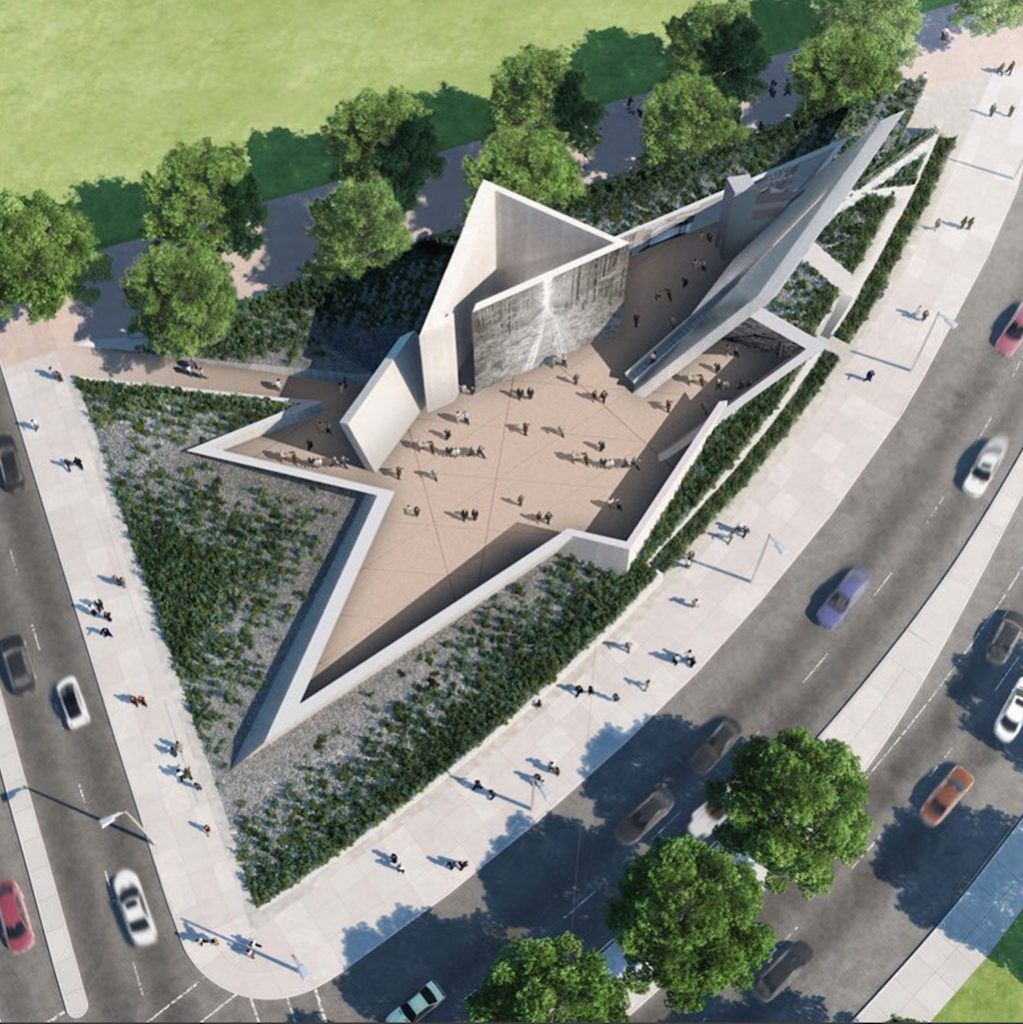Ottawa finally unveils Holocaust memorial
By Jordana Colomby
Spanning 3,000 square metres at the northeast corner of Booth and Wellington streets, the new National Holocaust Monument finally ends Canada’s status of being an Allied country from the Second World War without a Holocaust memorial in its capital.
Donors, stakeholders and survivors were scheduled to gather inside the monument and at the Canadian War Museum on Sept. 27 for an inauguration ceremony led by Prime Minister Justin Trudeau. Heritage Minister Mélanie Joly and the chair of the National Holocaust Monument Council, Rabbi Daniel Friedman, were also expected to speak.
The event could not be covered before press time for this issue of Centretown News.
Margi Oksner, executive director of the National Holocaust Monument Development Council, said the shattered star-shaped design of the memorial will accommodate up to 1,000 people for ceremonies and events.
The elongated six-point design titled, “Landscape of Loss, Memory and Survival,” won the design contest held by the National Capital Commission in 2013.
A proposed public memorial would normally elicit 30 to 40 responses, according to Oksner.
“For this project, they got almost 75,” she said, “just to give you a sense of how interested the world was in this project from the outset.”
Team Lord, the winning design team, includes Daniel Libeskind, the Polish-American architect and son of Holocaust survivors who was involved in designing the crystal façade of the Royal Ontario Museum in Toronto and the redevelopment of the Ground Zero space at the site of the former World Trade Center in New York.
Acclaimed Canadian photographer Edward Burtynsky contributed to the monument with six photographs of Auschwitz and other concentration camps displayed along the structure’s wall.
The Holocaust was the genocidal murder of some six million Jews by Nazi Germany during the Second World War. Jews and other classes of victims, including homosexuals, political dissidents and disabled people, were subject to mass-killing policies at the time.
Oksner said the council has been working on this project for five years, but the whole process began in 2007 when University of Ottawa student Laura Grosman led the lobbying for the federal government to build a monument; the National Holocaust Monument Act was passed in 2011.
Mina Cohn, the daughter of two Holocaust survivors and director of the Centre for Holocaust Education and Scholarship at Carleton University’s Zelikovitz Centre for Jewish Studies, said “seeing the monument becoming a part of Ottawa, it is an important moment for many survivors and Canadians, as well.”
She said she believes those lost to the Holocaust would have wanted others to learn about the discrimination and horror.
CHES was scheduled to host a reception on the day of the inauguration at the Library and Archives Canada building on Wellington Street, where visitors could learn about the new monument and honour Holocaust survivors who immigrated to Canada.
The event was to include representatives from 14 embassies, Rabbi Friedman, Dr. Robert Krell, psychiatrist and founding president of the Vancouver Holocaust Education Centre. Survivor testimonials created by CHES were also being screened.
Kati Morrison, one of the survivors from the testimony project, said: “The people who died in the Holocaust do not have a grave, so to have a memorial can be seen as a place where they can go to remember.”
The monument is also a reminder of how far Canada has come since the Second World War, according to Morrison.
Since 1939, when Canada turned away some 900 Jewish people from Europe seeking refuge aboard the MS St. Louis, the country has become home to nearly 40,000 Holocaust survivors.
The monument will be open for public viewing starting on Sept. 28.

